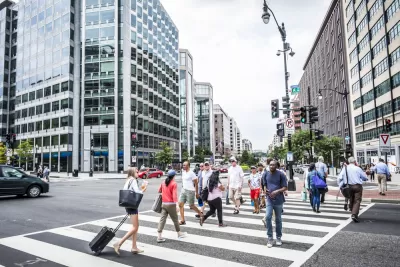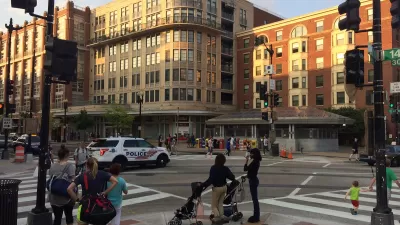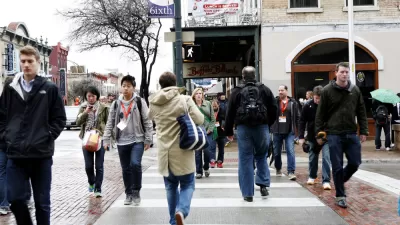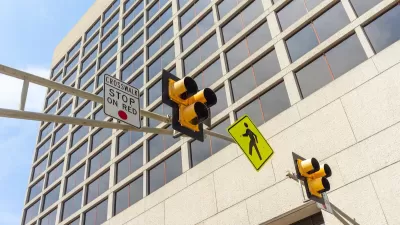These examples are specific to Washington, D.C., but many of the facts listed in this article will apply elsewhere, too.

Mitch Wander did a little digging into the world of crosswalks, discovering that there is a lot to learn and now about these features of public life. After a conversation with District Department of Transportation Communications Specialist, Michelle Phipps-Evans, Wander was able to make a list of ten items of crosswalk trivia:
- There are more crosswalks than you think there are
- Some new crosswalks are DDOT’s idea, yet many come from resident suggestions
- Marked crosswalks aren’t appropriate everywhere people request them
- Yet there are ways to make crosswalk locations more frequently-used, and safer
- Crosswalks can only go in locations compliant with the Americans with Disabilities Act (ADA)
- Crosswalks wear out and resident service requests prompt most repainting
- Crosswalk restriping is seasonal
- Pedestrian pylons are relatively inexpensive ways to enhance unsignalized crosswalks
- Some crosswalks need to be removed to make streets safer for pedestrians
- DDOT planning changes will lead to better decisions and safer pedestrian crossings
Wander provides a lot more detail on each of these points in the article.
FULL STORY: Ten things you might not know about crosswalks

Manufactured Crisis: Losing the Nation’s Largest Source of Unsubsidized Affordable Housing
Manufactured housing communities have long been an affordable housing option for millions of people living in the U.S., but that affordability is disappearing rapidly. How did we get here?

Americans May Be Stuck — But Why?
Americans are moving a lot less than they once did, and that is a problem. While Yoni Applebaum, in his highly-publicized article Stuck, gets the reasons badly wrong, it's still important to ask: why are we moving so much less than before?

Using Old Oil and Gas Wells for Green Energy Storage
Penn State researchers have found that repurposing abandoned oil and gas wells for geothermal-assisted compressed-air energy storage can boost efficiency, reduce environmental risks, and support clean energy and job transitions.

Updating LA’s Tree Rules Could Bring More Shade to Underserved Neighborhoods
A new USC study finds that relaxing Los Angeles’ outdated tree planting guidelines could significantly expand urban tree canopy and reduce shade disparities in lower-income neighborhoods, though infrastructure investments are also needed.

California's Canal Solar Projects Aim to Conserve Resources and Expand Clean Energy
California’s Project Nexus has begun generating electricity from solar panels installed over irrigation canals, with researchers and state agencies exploring statewide expansion to conserve water and boost clean energy production.

HHS Staff Cuts Gut Energy Assistance Program
The full staff of a federal program that distributes heating and cooling assistance for low-income families was laid off, jeopardizing the program’s operations.
Urban Design for Planners 1: Software Tools
This six-course series explores essential urban design concepts using open source software and equips planners with the tools they need to participate fully in the urban design process.
Planning for Universal Design
Learn the tools for implementing Universal Design in planning regulations.
Heyer Gruel & Associates PA
City of Moreno Valley
Institute for Housing and Urban Development Studies (IHS)
City of Grandview
Harvard GSD Executive Education
Salt Lake City
NYU Wagner Graduate School of Public Service
City of Cambridge, Maryland





























